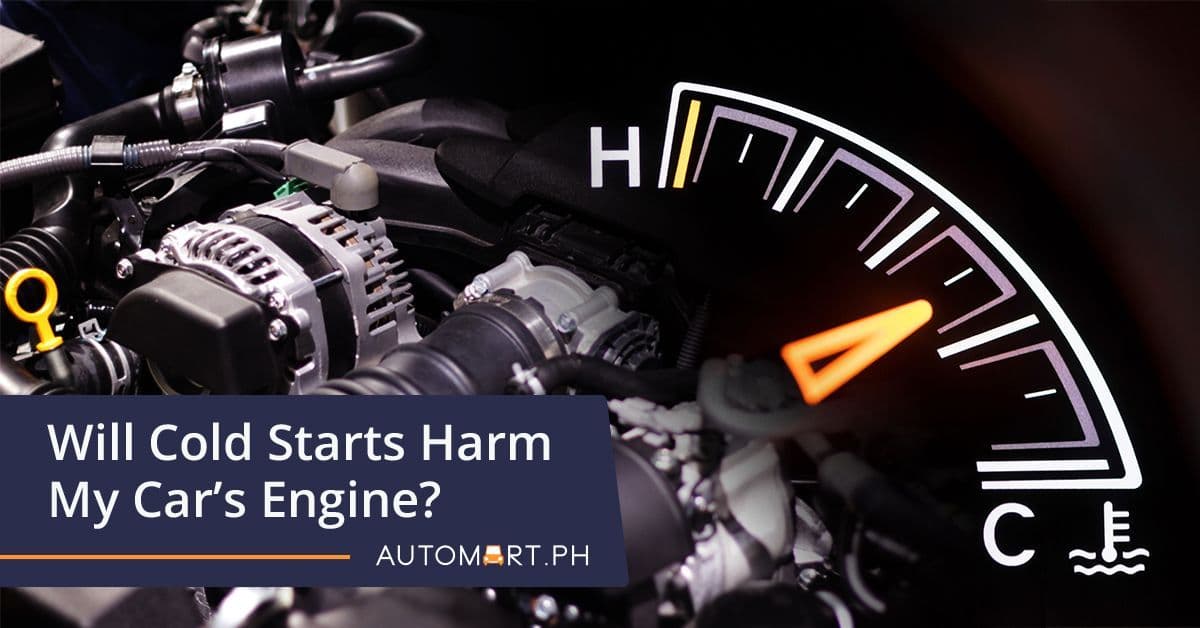
Will Cold Starts Harm My Car’s Engine?
Updated on January 09 2026
A cold start happens when the engine and the oil are “colder” than the ambient temperature. We all know that excess heat (or engine overheating) will kill your car’s engine. But did you also know that your engine needs heat to operate more efficiently?

Internal combustion engines (or reciprocating engines) will combust the air and fuel mixture more efficiently at higher temperatures. It’s the reason why your engine will run at a higher RPM (revolutions per minute) when it’s cold. During cold starts, the engine will ingest more fuel than air to warm itself up.
What happens to the engine when it’s cold?
If you haven’t started your car in four to five hours, the engine will be cold. In this state, almost all of the oil will drain to the bottom of the oil pan. In addition, the oil is thicker when it’s cold and will NOT flow as effortlessly inside the motor.
Hence the reason why keeping up with periodic oil changes is essential. If the oil is dirty, murky, or filled with sludge, it will fail to protect vital engine parts from friction during cold starts, leading to expensive engine damage later on.
Also, engine components tend to “shrink” ever so slightly as the engine cools down, and the gasoline will fail to vaporize appropriately until the engine warms up.
What should I do during cold starts?
After starting the engine, allow it to idle for a couple of seconds before driving off. It gives the oil more time to circulate and lubricate all the moving parts. Here are tips to remember when starting a cold engine:
- Avoid revving or racing the engine when cold. If you previously thought that revving a cold engine is cool, think again. You may not notice it at first, but incessantly revving a cold engine will aggravate friction and cause more damage.
- If you have an older car with a carbureted engine, do not forget to close the choke valve during cold starts. If not, the engine may repeatedly stall until it warms up.
- Watch your driving speed. Drive slowly for the first couple of minutes until the engine reaches its desired operating temperature.
- When the engine is cold, the automatic transmission is cold, too. Keep this in mind when starting a cold engine.
How will I know if my car’s engine is sufficiently warm?
Take a look at the temperature gauge. If the needle is in the blue or C zone, it means the engine and the oil are still cold. But if the needle is pointing halfway, it means the engine is warm and is ready for action.
However, most modern cars do not have a conventional temperature gauge. Instead, it has a cold temperature light. If the light is ON after starting the engine, it means the engine is still cold. However, the light will turn OFF once the motor is operating at the desired temperature.
How can I prevent engine damage during cold starts?
Friction is your primary enemy during cold starts. The single most effective way to protect your engine from excess friction is to change the oil periodically. Also, consider using full synthetic oil that offers better protection against cold starts.

Did you know that synthetic engine oil flows better even if the ambient temperature is below zero? This unique characteristic allows synthetic oil to offer significantly better protection against excess friction during cold starts than mineral-based or semi-synthetic engine oils.
When in doubt, consult the owner’s manual. If the manufacturer recommends fully synthetic motor oil, use it. Not all engines are the same, but most modern cars require synthetic motor oil to deliver exhilarating performance, better fuel economy, and fewer emissions.
Will cold starts harm my engine?
Yes and no. If you keep up with periodic oil changes and follow the tips above, cold starts will not harm your engine. However, if you don’t change the oil frequently and insist on revving a cold engine to help warm it up, you are doing more harm than good.